Author: Steve Crum
Hollywood’s stars have dimmed in recent days
Published in The Kansan City Kansan July 9, 1999, my weekly column focused on three showbiz celebrities who had recently died.
By Steve Crum
Life goes on. Life ends. Of course that applies to show biz celebrities as much as anyone. But few of us will have our deaths reported on the front page of the newspaper. When DeForest Kelley died last month, his Star Trek fame as Dr. McCoy made his death national news. The public has a fascination, albeit morbid, about the passing of famous people. Maybe it is because of images that are forever captured on film, tape, or disc. How long will Kelley’s work on Star Trek be viewed and re-viewed on TV alone? His shadow lives on, timelessly.
As fleeting as fame is, one’s celebrity is usually short-lived. That is why this column occasionally enlightens mass media fans about the deaths of the once famous. It is hoped that readers will warmly and nostalgically link with their own pasts while scrolling down this mostly unreported listing of recent celebrity deaths. Remember, reflect, and enjoy.
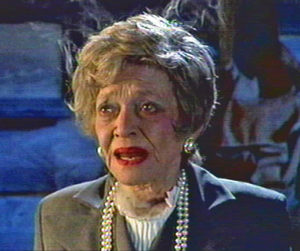 •SYLVIA SIDNEY (died July 1; 88 years old)—British actress Sidney made her film acting first impressions during the 1930’s, notably in Alfred Hitchcock’s 1935 thriller, Sabotage. A long career followed, later in supporting roles, in movies and TV. Small screen fans might recall her turn as Mama Carlson in the pilot episode of WKRP in Cincinnati.
•SYLVIA SIDNEY (died July 1; 88 years old)—British actress Sidney made her film acting first impressions during the 1930’s, notably in Alfred Hitchcock’s 1935 thriller, Sabotage. A long career followed, later in supporting roles, in movies and TV. Small screen fans might recall her turn as Mama Carlson in the pilot episode of WKRP in Cincinnati.
She is best remembered for her supporting work in two Tim Burton films: 1988’s Beetlejuice (she was the case worker who blows cigarette smoke out of her slit throat); and Mars Attacks! (1996), whose grandma character saves the world with her volume-blasting Slim Whitman record. There is an interesting sidelight to Sidney’s final film work in Mars Attacks! She played her scenes with a recently broken hip, suffered from a car accident that occurred just before filming began. Sylvia Sidney eventually died of throat cancer.
 •GUY MITCHELL (July 1; 72)—The 1950s pop singer really took off after Mitch Miller guided his career. Following some singing years with big bander Carmen Cavallaro’s Orchestra in the late 1940s, Mitchell was contracted by Columbia Records. Miller, then head producer-arranger at Columbia, successfully guided Mitchell much as he did Doris Day, Frankie Laine, and Tony Bennett. Guy Mitchell had million-seller hit after hit: “My Heart Cries for You” (1950—after Frank Sinatra turned down recording it); “Singing the Blues” (1956); “The Roving Kind” (1956)—remarkably the “B” side of “Singing the Blues”); and “Heartaches By the Number” (1959). Like me, maybe you remember the songs but had forgotten the name of the singer.
•GUY MITCHELL (July 1; 72)—The 1950s pop singer really took off after Mitch Miller guided his career. Following some singing years with big bander Carmen Cavallaro’s Orchestra in the late 1940s, Mitchell was contracted by Columbia Records. Miller, then head producer-arranger at Columbia, successfully guided Mitchell much as he did Doris Day, Frankie Laine, and Tony Bennett. Guy Mitchell had million-seller hit after hit: “My Heart Cries for You” (1950—after Frank Sinatra turned down recording it); “Singing the Blues” (1956); “The Roving Kind” (1956)—remarkably the “B” side of “Singing the Blues”); and “Heartaches By the Number” (1959). Like me, maybe you remember the songs but had forgotten the name of the singer.
Apart from show business, Guy had cowboy aspirations, making saddles and riding horses. Often headlining in Las Vegas during his heyday, Mitchell died in a Vegas hospital after “complications following surgery.”
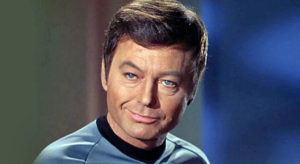 •DEFOREST KELLEY (June 11; 79)—Yes, it is old news by now, but maybe there are some career tidbits outside his Star Trek legacy. For one, are you aware that Kelley played Morgan Earp opposite Burt Lancaster’s Wyatt in 1957’s Gunfight at the O.K. Corral? Of course, we all know that Kelley was a support in a multitude of B-westerns and crime dramas throughout his pre-Star Trek days.
•DEFOREST KELLEY (June 11; 79)—Yes, it is old news by now, but maybe there are some career tidbits outside his Star Trek legacy. For one, are you aware that Kelley played Morgan Earp opposite Burt Lancaster’s Wyatt in 1957’s Gunfight at the O.K. Corral? Of course, we all know that Kelley was a support in a multitude of B-westerns and crime dramas throughout his pre-Star Trek days.
But did you know his last known screen performance is as the voice of Viking 1 in the direct-to-video animated feature, The Brave Little Toaster Goes to Mars? Or that he might, just might, appear as Dr. Bones McCoy in Secret of Vulcan Fury, a rumored upcoming Star Trek movie? (Gossip says that the production is currently stalled due to lack of funds.) If I hear anything about that movie, I will let you know. If any readers know anything, please let me know.
Kelley died after a long illness at the Motion Picture-Television Fund Hospital in Los Angeles. Carolyn, his wife of 55 years, was at his bedside. Coincidentally, Mrs. Kelley just happened to be a patient in the same hospital due to her recently broken leg.
Talented animators drawn to ‘Tarzan’ tale
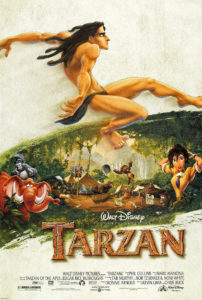 Published in The Kansan City Kansan June 11, 1999, my weekly column focused on the co-directors of Disney’s animated ‘Tarzan’ as well as Bruce W. Smith one of the movie’s animators. I interviewed all three in Kansas City, Mo. After the interview, I asked Smith for the gorilla sketch he had drawn during a demo, and he did me one better. He drew a new one, and signed it for me.
Published in The Kansan City Kansan June 11, 1999, my weekly column focused on the co-directors of Disney’s animated ‘Tarzan’ as well as Bruce W. Smith one of the movie’s animators. I interviewed all three in Kansas City, Mo. After the interview, I asked Smith for the gorilla sketch he had drawn during a demo, and he did me one better. He drew a new one, and signed it for me.
Since then, Chris Buck directed several Disney classics, including ‘Frozen.’ Kevin Lima has directed a number of animated movies too, including ‘102 Dalmations’ and ‘Enchanted’.
By Steve Crum
Watching his favorite cartoon show The Flintstones led to sketching and creating his own high school comic strip. That was a decade-plus ago. A vine swing to 1999, and a very grown up and gifted Bruce W. Smith is promoting Tarzan, Walt Disney’s animated version of the jungle man story. (Tarzan will be reviewed in next week’s column.)
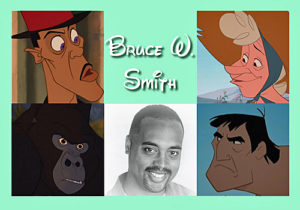 Smith was animator of the “Kerchak” character. Kerchak, the adoptive-gorilla dad of Tarzan, is integral to the film and on-screen for a good number of sequences. Smith’s Kansas City visit earlier this week was the winding-down part of a countrywide press tour. Fellow travelers are Tarzan’s co-directors Chris Buck and Kevin Lima. (They also have a history of on-hand animating at Disney.) The three held a lively and insightful multimedia promo that included film clips, discussion, personal interviews, and an overhead projection of Smith’s live and on-the-sport drawing of the silverback gorilla, Kerchak.
Smith was animator of the “Kerchak” character. Kerchak, the adoptive-gorilla dad of Tarzan, is integral to the film and on-screen for a good number of sequences. Smith’s Kansas City visit earlier this week was the winding-down part of a countrywide press tour. Fellow travelers are Tarzan’s co-directors Chris Buck and Kevin Lima. (They also have a history of on-hand animating at Disney.) The three held a lively and insightful multimedia promo that included film clips, discussion, personal interviews, and an overhead projection of Smith’s live and on-the-sport drawing of the silverback gorilla, Kerchak.
To achieve realism, Smith studied video footage taken over several months in Uganda by the Disney crew. This 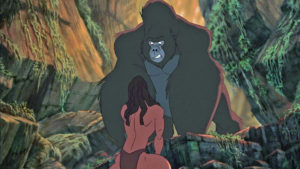 was a beginning step in the four year creation of the film. Since Smith’s sole character was the gorilla patriarch, he focused on the filmed gorilla leaders, including their manner of defending the family.
was a beginning step in the four year creation of the film. Since Smith’s sole character was the gorilla patriarch, he focused on the filmed gorilla leaders, including their manner of defending the family.
“The funny thing is,” Smith said, “we had no footage of any gorilla on the attack. It is actually rare that a gorilla does attack. He will bluff, beat his chest, and roar. Invariably, he will run away at that point.”
Or wait for the intruder to back off.
There was enough footage of gorillas charging and stopping to imply a full attack. Smith then added his own imagination in the full attack scenes depicted in the movie. The end product included jarring bursts of raw power—very effectively so. If it is not already clear, this Disney cartoon feature is not another Jungle Book. All the animals, except for two or for comedy added for comic relief, are National Geographic-authentic.
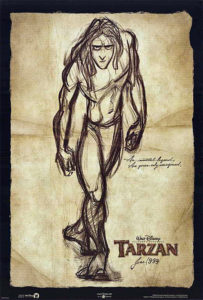 Even Tarzan is realistically drawn as lean and lanky. His demeanor is often calculating; and he crouches in tree tops with penetrating eyes, steadying himself with adaptively large feet and hands. He is faithful to the ape man that author Edgar Rice Burroughs created more than 70 years ago.
Even Tarzan is realistically drawn as lean and lanky. His demeanor is often calculating; and he crouches in tree tops with penetrating eyes, steadying himself with adaptively large feet and hands. He is faithful to the ape man that author Edgar Rice Burroughs created more than 70 years ago.
Chris Buck shared a copy of a letter that Burroughs wrote to his son in 1936. In it, Burroughs speaks fo bringing his creation in animated form to the screen. Prior to that time, numerous live action Tarzans, including Johnny Weismuller’s, had been produced. (This version marks Tarzan movie No. 48). It is interesting that Burroughs even considered an animated feature at all, since the first full length cartoon, Snow White, would not be released until a year later.
“The cartoon must be good,” Burroughs writes. “It must approximate Disney excellence.” Now THAT is an endorsement way before its time.
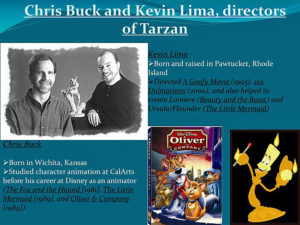 Co-director Lima was part of the safari team that studied the gorillas, observing aspects of their family unit. Since gorillas have a system of responsibility, respect, and specific duties for each member, the family structure made for a built-in theme.
Co-director Lima was part of the safari team that studied the gorillas, observing aspects of their family unit. Since gorillas have a system of responsibility, respect, and specific duties for each member, the family structure made for a built-in theme.
“The family theme of belonging,” said Lima, “is central to the Tarzan story.” In it, for those two or three readers who do not know, the baby Tarzan is found by gorillas in the jungle when his parents are killed. He is then raised by Kala (voiced by Glenn Close), who had recently lost her own child.
Yes, there is also a Jane in this version, including a “me Tarzan, you Jane” bit. There is also Tarzan surfing through the trees, a fabulous Tarzan versus hundreds of killer baboons sequence, and Rosie O’Donnell as the voice of Terk, a gorilla friend of Tarzan’s since childhood. 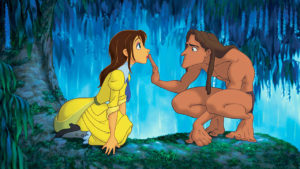
To tree-top it all off, a heard-only Phil Collins sings five of his original songs.
A brief, one-ply history of TV & movie toilets
Published in The Kansan City Kansan June 25, 1999, my weekly column focused on potty references in a variety of films and TV programs up to that time.
By Steve Crum
Flash! Let’s rephrase that: Flush! It is a dirty job, but someone has to write about it. Even though most decent, clean cut moviegoers tend not to discuss what goes on behind the closed bathroom door in our homes, moviemakers increasingly are setting up widescreen cameras focused on toilet bowls. It is a trend, particularly in comedies, that addresses the basest of adolescent humor.
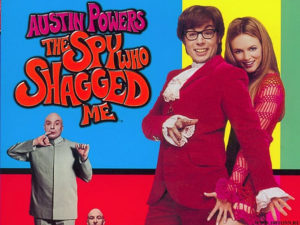 In the past five years, exemplified in Austin Powers, The Spy Who Shagged Me, potty jokes have been written into screenplays with double-ply consistency. Why? They get laughs—huge laughs—from a vast number of ticket buyers.
In the past five years, exemplified in Austin Powers, The Spy Who Shagged Me, potty jokes have been written into screenplays with double-ply consistency. Why? They get laughs—huge laughs—from a vast number of ticket buyers.
No surprise that the current No. 1 movie (no potty pun intended), Austin Powers, is laced with bathroom one-liners and sequences. This is not saying that Austin’s appeal is totally john jokes; there are also plenty of sexual innuendo bits and parodies to round out the film. But Le Toilet is a definite co-star.
Movies never used to acknowledge that a toilet even existed. While Marilyn Monroe catches her toe in the bathtub faucet in 1955’s The Seven Year Itch, try to locate a toilet bowl in the scene. (Of course, why would I be looking at anything but Monroe?) That goes for the dozens of bubble bath scenes in movies since silent film days.
Some low/highlights in the media history of bathroom humor:
•I LOVE LUCY—The legendary 1950s sitcom not only never acknowledges a bathroom in the Ricardos’ apartment. Not only that, but most of the time had the couple in separate beds.
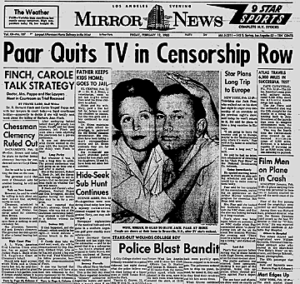 •JACK PAAR—On Feb. 11, 1960, the emotional Tonight Show host left the show while on air after NBC censors snipped his “water closet” joke from his previous day’s opening monologue taping. The word itself, British slang for bathroom, was deemed offensive.
•JACK PAAR—On Feb. 11, 1960, the emotional Tonight Show host left the show while on air after NBC censors snipped his “water closet” joke from his previous day’s opening monologue taping. The word itself, British slang for bathroom, was deemed offensive.
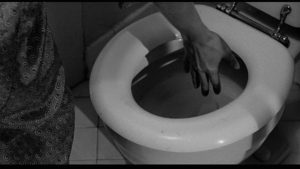 •PSYCHO (1960)—The famous shower scene does include a toilet. However, director Alfred Hitchcock never really focuses on the bowl even when a torn up note is later retrieved from inside the bowl.
•PSYCHO (1960)—The famous shower scene does include a toilet. However, director Alfred Hitchcock never really focuses on the bowl even when a torn up note is later retrieved from inside the bowl.
•ALL IN THE FAMILY—A breakthrough in restroom humor occurred in the early 1970s. For the first time on TV, the sound of a flushing toilet was heard, and only heard, as Archie Bunker pulled the handle upstairs and out of sight.
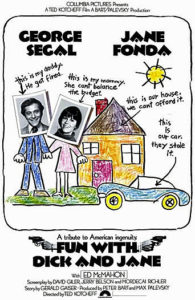 •FUN WITH DICK AND JANE—1977 caper comedy with Jane Fonda and George Segal includes a heretofore no-no sequence. While talking to her husband, played by Segal, Fonda unabashedly walks into the bathroom, drops her pants, and sits on the toilet. The camera stays on her in medium close-up throughout, although never graphically. She never misses a beat talking to Segal, who stands opposite her as they continue their conversation.
•FUN WITH DICK AND JANE—1977 caper comedy with Jane Fonda and George Segal includes a heretofore no-no sequence. While talking to her husband, played by Segal, Fonda unabashedly walks into the bathroom, drops her pants, and sits on the toilet. The camera stays on her in medium close-up throughout, although never graphically. She never misses a beat talking to Segal, who stands opposite her as they continue their conversation.
•CLINT EASTWOOD—How many westerns and good ol’ boy flicks did he make that included a sequence where some redneck no-good turns up beaten and passed out with his head in some bar’s toilet?
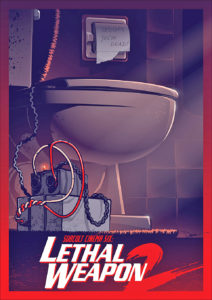 •DANNY GLOVER—It was perhaps the funniest scene in the Lethal Weapon series: Glover sitting on a rigged-to-explode toilet and unable to move. Mel Gibson, of course, saves the day. The year was 1989, and Lethal Weapon 2 featured dynamite potty humor—literally.
•DANNY GLOVER—It was perhaps the funniest scene in the Lethal Weapon series: Glover sitting on a rigged-to-explode toilet and unable to move. Mel Gibson, of course, saves the day. The year was 1989, and Lethal Weapon 2 featured dynamite potty humor—literally.
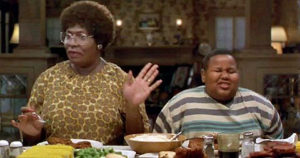 •THE NUTTY PROFESSOR (1996)—The most memorable sequences in Eddie Murphy’s film are the ones where his family sits around the dining room table, taking turns passing gas. Envision Mickey Rooney’s Hardy Family getting away with that. On second thought, don’t.
•THE NUTTY PROFESSOR (1996)—The most memorable sequences in Eddie Murphy’s film are the ones where his family sits around the dining room table, taking turns passing gas. Envision Mickey Rooney’s Hardy Family getting away with that. On second thought, don’t.
•THERE’S SOMETHING ABOUT MARY (1998)—Blame the directing Farrelly Brothers for lacing this hit with an abundance of once unmentionable laughs. Note Ben Stiller’s getting caught in his zipper during a urinating scene, and his bathroom masturbating scene, among others. Might as well give the Farrellys credit for potty jokes in their other hits too: Kingpin and Dumb and Dumber. Call them the Lewis and Clark of the Hollywood Potty Trail. 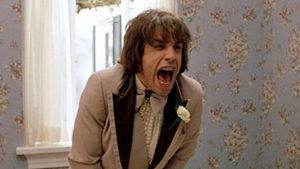
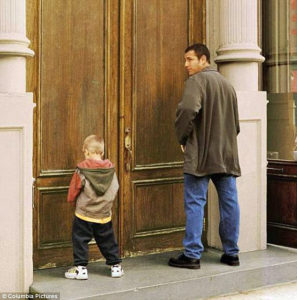 •BIG DADDY—Opening today at a theatre outside of Wyandotte County is this Adam Sandler vehicle in which previews show him and a 6 year-old co-star publicly urinating (backs to camera) on the side of a building. Pure comic genius.
•BIG DADDY—Opening today at a theatre outside of Wyandotte County is this Adam Sandler vehicle in which previews show him and a 6 year-old co-star publicly urinating (backs to camera) on the side of a building. Pure comic genius.
=====
Where is Hollywood aiming with all this? Last week’s premiere of Comedy Central’s The Man Show featured the two hosts blowing up dog feces with a large firecracker on camera. They were covered in the stuff, and the studio audience roared in delight.
Still don’t see the trend? It was recently announced that Mr. Whipple, the toilet paper-squeezing grocer, is returning to commercials.
That really tears it.
Remembering Gene Siskel
Published in The Kansan City Kansan Feb. 26, 1999, my weekly column focused on the Feb. 20 death of film critic Gene Siskel.
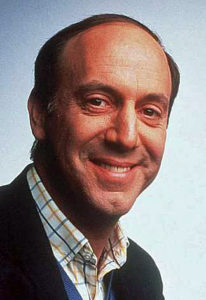 By Steve Crum
By Steve Crum
Gene Siskel’s death last week at 53 disturbed me more than I expected. The man was neither a superstar nor a childhood idol—I am only a couple of years his junior. I make the latter reference because of the personal effect of last year’s passings of Buffalo Bob Smith, Roy Rogers, and Gene Autry.
Yet moments after hearing of this movie critic’s death I was stunned. That reaction surprised me until I thought about it. First there were the dozen calls from friends and relatives telling me about how shocked they were. Never in any previous phone conversation had Siskel ever even been mentioned. Yet now he was newsworthy, and spoken of as if it were a distant relative who had died. Then I thought about it some more.
Undoubtedly the calls I received were in part prompted by the fact that I am also a film critic—a media kinship link, perhaps. But that was not the all of it. My callers felt as I did: Gene Siskel, even more than his TV partner Robert Ebert, talked about movies in ways we could all understand. And most of the time. we agreed with him over Ebert. Most of us enjoy movies, and many of us savor them.
Siskel’s joy and passion was evident in each and every broadcast and column, and viewers and readers loved him for it. That does not mean that we always agreed with him. And that does not mean he was the first movie critic ever. But Siskel could be called the first people’s film critic. He was always interesting, incisive, sensitive—be the movie a Mel Brooks farce, a fanciful George Lucas space adventure or a serious Schindler’s List. Conversely, like any critic, when a movie was turkey, he was quick to take the first carving.
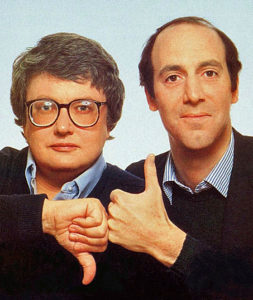 He and his colleague Ebert and franchised the art of movie opinions into a vastly popular TV series that ran in similar forms for 24 years. Their chemistry clicked, and now we know that a friendship and brotherly love developed. Sometimes, especially in the early days, their critical barbs often lashed at each other in addition to the targeted films. In recent years, though, that softened to good natured, highly opinionated discussions.
He and his colleague Ebert and franchised the art of movie opinions into a vastly popular TV series that ran in similar forms for 24 years. Their chemistry clicked, and now we know that a friendship and brotherly love developed. Sometimes, especially in the early days, their critical barbs often lashed at each other in addition to the targeted films. In recent years, though, that softened to good natured, highly opinionated discussions.
The last time I watched Siskel & Ebert, three weeks ago, Roger Ebert was soloing. Siskel was absent, having already announced that he was taking some time off to recuperate from brain surgery. Ebert ended the broadcast with: “And Gene, I want you to know that it is awfully lonely up here in the balcony without you. Get better soon.”
Sadly, that was not to be, and Gene Siskel soon passed. Now Roger Ebert’s future as a TV critic is unknown. For a time he will experiment with alternating guest co-hosts, probably hoping that a similar Siskel and Ebert spark will occur. We all know that like any original, no substitute will ever be like Gene Siskel. No one has to reveal that fact to Roger Ebert.
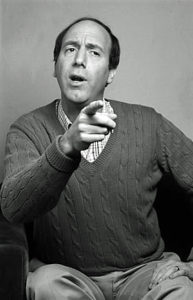 Even in his final days, post surgery, Siskel’s vision and fervor for the motion picture is evident in a Chicago Tribune column he wrote on Dec. 20, 1998. In it, he speaks of the year in films that had ended, and lauds the future years. An excerpt:
Even in his final days, post surgery, Siskel’s vision and fervor for the motion picture is evident in a Chicago Tribune column he wrote on Dec. 20, 1998. In it, he speaks of the year in films that had ended, and lauds the future years. An excerpt:
“1998 was a magnificent year for movies, the best of the decade, perhaps the best of two decades, fueled largely by advanced use of computer-generated images, which at the conclusion of the first century of filmmaking now must considered a major force akin to someone discovering the use of actors to tell a story.
“Indeed as we move toward a cinematic centenary, what we shall see is truly, more than ever, limited only the imagination of a filmmaker. Most limits are off now.”
If only Gene Siskel could have lived to experience that future, and we could hear about it through him.
Noteworthy Showbiz Kansans—or—It sure doesn’t look like Kansas, Dorothy
Since my following column was published in The Kansas City Kansan 21 years ago, the Kansas State Historical Society has eliminated several names from its list of prestigious “Kansans.” (Some were born in Kansas; some made their name in The Wheat State.) Among the missing in 2019, there are Dee Wallace, Jean Harlow, Larry Parks, Lyle Waggoner, and Don Johnson. I suppose that since they no longer star in movies and TV shows, they are no longer relevant. (However, Dee IS in a current TV show.) If that is the case, then why is “Cheers” star Kirstie Alley still on the list? She has not done anything in showbiz for years. And various sports legends? The contradictions go on and on. Nonetheless, here is my list compiled from the KSHS website in 1998. This story was originally published over several weeks in five installments. Enjoy, learn, and maybe even be surprised.
By Steve Crum
Who can you trust if you can’t trust the Kansas State Historical Society? Sounds like an accurate and reliable source of information. But the fact is the organization has posted an impressively large list on the Internet that includes information short of 100 percent true. In some cases, way short.
The list is dubiously headlined “Notable Kansans—People of Renown Who Have Lived and Are Living Kansas History.” Maybe I am just me, but doesn’t that ring of past and present Kansans who have achieved some celebrity? Problem-with-the-list Part 2: Define “Kansan.” Besides labeling this newspaper, the word denotes a person born in Kansas. That does not mean he or she stayed in the Wheat State thereafter.
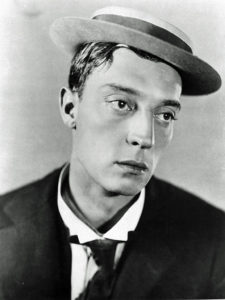
Buster Keaton is a good example. Born in the small burg of Piqua (near the booming Iola) before the turn of the century, Keaton made his first dent in vaudeville houses with his family touring throughout the country. His real fame occurred on the West Coast in silent pictures. Yet Buster Keaton is heralded, rightly so, as a Kansan.
Come we to the “Notable Kansans” list. In parenthesis following each name is a city name. In some cases, several cities are listed, implying the first name is where the person was born, followed by later childhood, and perhaps college residence. Unfortunately, there is no explanation of the city names, only implications.
Explain the inclusion of Wilt “The Stilt” Chamberlain as a Kansan. If memory serves, Chamberlain was born in New York. Certainly he first made news as a KU basketball player. But is it fair to include him on the list? (Lawrence is in parenthesis by his name.) Certainly we Kansans brag and claim him as a great KU athlete. However, it takes a stretch longer than The Stilt’s to call him a Kansan.
Siphoning through the long and some questionable list, I have picked out truly “notable Kansans” who made their marks in show business.
=====
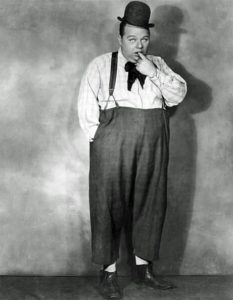 •KIRSTIE ALLEY (Wichita)—The Emmy winning star of Cheers and the current top 10 hit, Veronica’s Closet, is indeed a Kansan. In a recent interview, Alley scoffed at the idea of ever returning to Wichita. Until TV and film production move to Kansas, her position is understandable. Or did she mean something else?
•KIRSTIE ALLEY (Wichita)—The Emmy winning star of Cheers and the current top 10 hit, Veronica’s Closet, is indeed a Kansan. In a recent interview, Alley scoffed at the idea of ever returning to Wichita. Until TV and film production move to Kansas, her position is understandable. Or did she mean something else?
•ROSCOE “FATTY” ARBUCKLE (Smith Center)—In his silent pictures day, Arbuckle was numero uno most popular and highest paid star. Then came a scandal that vicious tabloids laced with sex and murder, and Fatty’s career was history. Even though he was totally absolved of all guilt in court, the damage was done. Interestingly, if he were popular today and underwent similar scandal, his career would probably skyrocket. But those were the days when Victorian values ruled. Sadly, Arbuckle later worked as a film director under an assumed name.
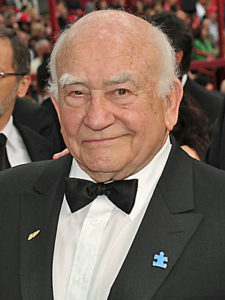
•ED ASNER (Kansas City)—Perhaps the most famous, certainly the longest sustaining TV and movie star to be born in KCK, Asner graduated from Wyandotte High School, my alma mater. A cherished photo of mine is from the Los Angeles Times 20 years ago. It shows Asner jogging through Beverly Hills, wearing a Wyandotte Bulldogs T-shirt. The man remembers his roots. I am proud to say we worked on the same high school newspaper, The Pantograph. But not, no way, at the same time.
•HUGH BEAUMONT (Eudora)—Beaumont, who died a few years ago, spent his later years as a minister. He will be forever remembered as Beaver Cleaver’s father, Ward.
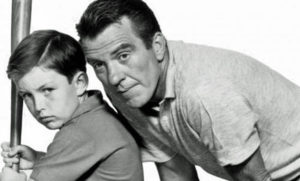 •JOHN RICHARD ROMULUS BRINKLEY (Milford)— The pioneer radio broadcaster and Kansas loony was first and fortunately last in several facets. “Dr.” Brinkley, as he was known, not only founded the first radio station in the state (KFKB: “Kansas First, Kansas Best”), but was among the first anywhere to explore its usefulness as public manipulator. In those Alf Landon times, Brinkley campaigned via his station and was nearly elected governor.
•JOHN RICHARD ROMULUS BRINKLEY (Milford)— The pioneer radio broadcaster and Kansas loony was first and fortunately last in several facets. “Dr.” Brinkley, as he was known, not only founded the first radio station in the state (KFKB: “Kansas First, Kansas Best”), but was among the first anywhere to explore its usefulness as public manipulator. In those Alf Landon times, Brinkley campaigned via his station and was nearly elected governor.
But that was not all that almost got him elected. His political power ended when it was discovered 5,000 signatures of dead citizens (“ghost voters”) filled his ballots. In addition, imagine a Kansas governor who also successfully hawked goat gland transplants. But that’s another story entirely.
•KARLA BURNS (Wichita)—Listed only as a Broadway actress, Burns could not be found in any source material readily available. (2019 Update: Karla is actually well known in operatic circles, but is no longer included on the list of notable Kansans.)
•WILBUR “BUCK” CLAYTON (Parsons)—In his glory years, Clayton was usually seen over the border on the Missouri side. That is when played trumpet with the legendary Count Basie.
•WILLIAM “BUFFALO BILL” CODY (Leavenworth)—After minimal research, it was found that Cody did indeed grow up in Leavenworth…er, near Leavenworth. So Leavenworth’s downtown Cody Hotel need not change its entire name. Just knock off a letter or two. The famous buffalo hunter and Wild West showman was actually born in Ohio. He was was also featured in at least one silent movie as himself.
•THOMAS R. BOSTON CORBETT (Concordia)—Corbett is credited with being the shooter of Lincoln’s assassin, John Wilkes Booth. He was part of the posse that hunted Booth after the killer bolted from Ford’s Theater. (Corbett is included in this showbiz list since he shot an actor.)
•LORENZO FULLER JR. (Stockton)—An actor who was the “first American to host a nation TV show,” supposedly KSHS. Yet no such name is even mentioned in available references like Brooks and Marsh’s Complete Directory to Prime Time Network and Cable TV Shows. Who’s Who in Hollywood, a huge source book, has no Lorenzo Fuller either. Maybe someone in Stockton remembers him.
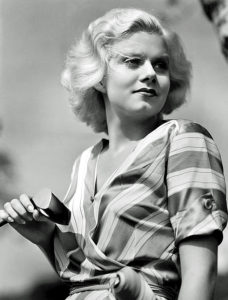 •JEAN HARLOW (Seneca)—Several friends claim that Harlow was actually reared in Kansas City, Kansas. They even name specific addresses where she lived while a child. Most Show-Me’s claim her as a Kansas City, Missourian. Any Harlow stories from readers?
•JEAN HARLOW (Seneca)—Several friends claim that Harlow was actually reared in Kansas City, Kansas. They even name specific addresses where she lived while a child. Most Show-Me’s claim her as a Kansas City, Missourian. Any Harlow stories from readers?
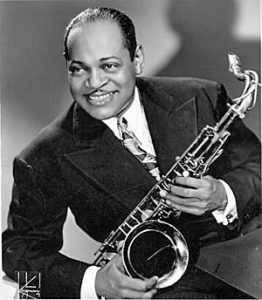 •COLEMAN HAWKINS (Topeka)—The legendary jazz saxophonist played with Dizzy Gillespie, Fletcher Henderson, Duke Ellington, and Count Basie.
•COLEMAN HAWKINS (Topeka)—The legendary jazz saxophonist played with Dizzy Gillespie, Fletcher Henderson, Duke Ellington, and Count Basie.
•JAMES BUTLER “WILD BILL” HICKOK (Ellis County, Abilene)—Gunfighter, sheriff and marshal, Hickok cut a legendary swath throughout the West. Thanks to movies and TV, he is forever heroic.
•DENNIS HOPPER (Dodge City)—After winning his Oscar for Easy Rider, Hopper’s film output waned. It 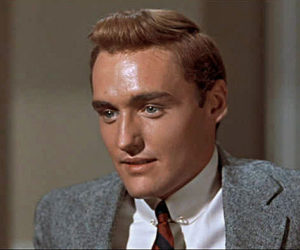 regained in the 1990’s, however, when he took on character roles, particularly as memorable villains in such movies as Speed and Red Rock West.
regained in the 1990’s, however, when he took on character roles, particularly as memorable villains in such movies as Speed and Red Rock West.
 •(JAMES) LANGSTON HUGHES (Topeka, Lawrence)—The talented poet and writer’s works have been adapted for film. His writings are required reading in classrooms across America.
•(JAMES) LANGSTON HUGHES (Topeka, Lawrence)—The talented poet and writer’s works have been adapted for film. His writings are required reading in classrooms across America.
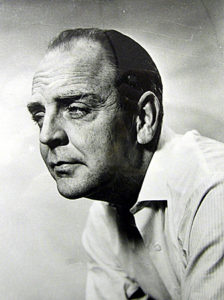 •WILLIAM INGE (Independence)—The Pulitzer Prize winning playwright of Picnic and The Dark at the Top of the Stairs is honored annually in his home territory with an internationally known celebration that attracts superstars of Broadway and Hollywood.
•WILLIAM INGE (Independence)—The Pulitzer Prize winning playwright of Picnic and The Dark at the Top of the Stairs is honored annually in his home territory with an internationally known celebration that attracts superstars of Broadway and Hollywood.
Pittsburg State University’s library has an extensive William Inge collection. Trivia: Inge taught from 1937-38 at Cherokee County Community High School in Columbus, Kansas.
•EVA JESSYE (Coffeyville, Caney, Iola, Pittsburg)—This singer really got around the Wheatland. She was also versatile in her talents. In addition to singing, she acted, composed, wrote poetry and books, and directed a choral group. 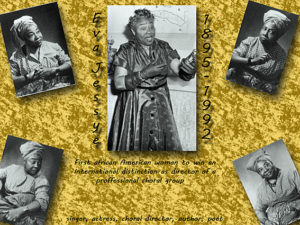
Her papers are kept at the Pittsburg State University library. Jessye was choral conductor for the original production of Gershwin’s Porgy and Bess as well as Director King Vidor’s classic early talkie, Hallelujah.
•DON JOHNSON (Wichita, Galena)—The Nash Bridges star also attended KU, so why Lawrence is not included in the location listing is inconsistent with the KSHS’s style.
•GORDON JUMP (Manhattan)—Known primarily as the Maytag repairman in TV commercials, Jump played the station owner on WKRP in Cincinnati.
•BUSTER KEATON (Piqua)—Perhaps the greatest film comedian of them all, Keaton’s brilliance still shines in his numerous silent and sound movies. Add great film director to his credits.
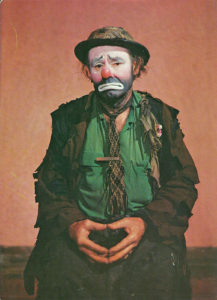 •EMMETT KELLY (Sedan)—In The Greatest Show on Earth, this wonderful circus clown reigned as king of clowns for years. He is still the most famous circus clown of them all.
•EMMETT KELLY (Sedan)—In The Greatest Show on Earth, this wonderful circus clown reigned as king of clowns for years. He is still the most famous circus clown of them all.
•ROBERT KELKER-KELLY (Wichita)—Soap opera fans will recognize this daytime TV star from Another World and Days of Our Lives.
•STAN KENTON (Wichita)—He was the Big Band leader who introduced the cool element into his 1950’s jazz arrangements.
•WILLIAM “BILL” KURTIS (Independence, Topeka)—Week after week on the A&E Network, Kurtis produces and hosts his popular and long running Investigative Reports. His previous work includes news reporting and anchoring at local and national levels.
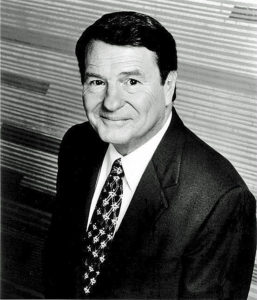 •JIM LEHRER (Wichita, Independence)—PBS’s The News Hour with Jim Lehrer would not exist without this genial and introspective interviewer.
•JIM LEHRER (Wichita, Independence)—PBS’s The News Hour with Jim Lehrer would not exist without this genial and introspective interviewer.
•DELANO LEWIS (Topeka, Arkansas City)—An unsung leader deserving to be recognized for multiple accomplishments: a U.S. Department of Justice attorney; Peace Corps Director in Nigeria and Uganda; and the first African-American President of National Public Radio.
•KERRY LIVGREN (Topeka)—Livgren is an original member of the legendary rock group, Kansas. (For that matter, why isn’t the rock group itself listed as a “notable Kansan”?)
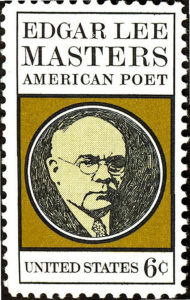 •EDGAR LEE MASTERS (Garnett)—Forever a part of high school literature books is this poet and biographer.
•EDGAR LEE MASTERS (Garnett)—Forever a part of high school literature books is this poet and biographer.
•WILLIAM “BAT” MASTERSON (Ford County)—Masterson ventured into law as a sheriff. When he died, he had been a professional journalist/sports writer for years. Just having Bat Masterson on the staff brought notoriety to the newspaper.
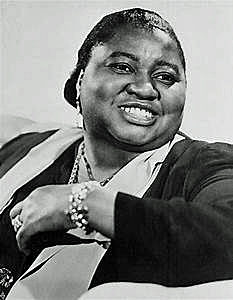 •HATTIE MCDANIEL (Wichita)—The Oscar winning actress was the first African-American to clinch an Oscar (Best Support for her role as Mammy in Gone with the Wind.) McDaniel was also one of several actresses to portray Beulah on the TV series of the same name.
•HATTIE MCDANIEL (Wichita)—The Oscar winning actress was the first African-American to clinch an Oscar (Best Support for her role as Mammy in Gone with the Wind.) McDaniel was also one of several actresses to portray Beulah on the TV series of the same name.
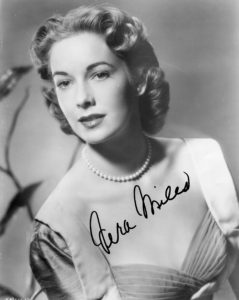 •VERA MILES (Wichita)—The TV, Broadway, and film actress was supposed to be Alfred Hitchcock’s next major star. He groomed her repeatedly by planning to feature her in several films. But for one reason and another, Miles could never time it right to star. As a result, she peaked as a supporting actress in such films as Psycho, wherein she played Janet Leigh’s sister who searches in vain to find Leigh. (Leigh’s character is eventually inside her submerged car in the swamp outside the Bates Motel. Remember?)
•VERA MILES (Wichita)—The TV, Broadway, and film actress was supposed to be Alfred Hitchcock’s next major star. He groomed her repeatedly by planning to feature her in several films. But for one reason and another, Miles could never time it right to star. As a result, she peaked as a supporting actress in such films as Psycho, wherein she played Janet Leigh’s sister who searches in vain to find Leigh. (Leigh’s character is eventually inside her submerged car in the swamp outside the Bates Motel. Remember?)
•LAWRENCE VAN COTT NIVEN (Topeka)—Listed as a Hugo Award-winning science fiction writer.
•CHARLIE “YARDBIRD” PARKER (Kansas City)—Sure, he is most identified with the Missouri side of the border, but the legendary jazz saxophonist has roots in Kansas.
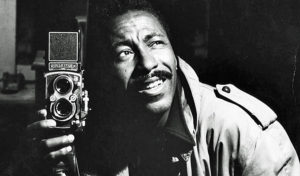 •GORDON PARKS (Fort Scott)—Like Charlie Parker, Parks shares a hometown. The noted photographer, writer, and film director (The Learning Tree) is an extraordinary Jayhawker.
•GORDON PARKS (Fort Scott)—Like Charlie Parker, Parks shares a hometown. The noted photographer, writer, and film director (The Learning Tree) is an extraordinary Jayhawker.
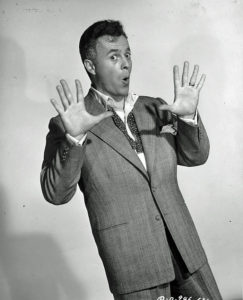 •LARRY PARKS (Olathe)—The Oscar nominated leading man (1946’s The Jolson Story) was indeed raised in nearby Olathe. After making the sequel Jolson Sings Again, wherein the brilliant Parks again meticulously lip synched Jolson’s actual singing voice, Parks’ career crashed. Pulled up before HUAAC Communist hunters, Parks cooperated. But to no avail. He was blacklisted until 1962’s Freud. His career never recovered.
•LARRY PARKS (Olathe)—The Oscar nominated leading man (1946’s The Jolson Story) was indeed raised in nearby Olathe. After making the sequel Jolson Sings Again, wherein the brilliant Parks again meticulously lip synched Jolson’s actual singing voice, Parks’ career crashed. Pulled up before HUAAC Communist hunters, Parks cooperated. But to no avail. He was blacklisted until 1962’s Freud. His career never recovered.
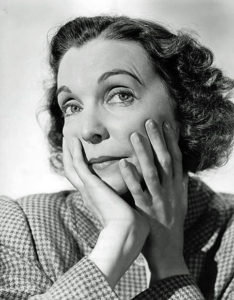 •ZASU PITTS (Parsons)—Anyone who remembers early TV recalls Pitts as Gale Storm’s sidekick-in-mischief on the long running Oh, Susannah. Pitts was primarily known as a comedienne. However, she was also a heralded dramatic actress in silent films. “Well, forever more!”—as she often lamented.
•ZASU PITTS (Parsons)—Anyone who remembers early TV recalls Pitts as Gale Storm’s sidekick-in-mischief on the long running Oh, Susannah. Pitts was primarily known as a comedienne. However, she was also a heralded dramatic actress in silent films. “Well, forever more!”—as she often lamented.
•WILLIAM C. QUANTRILL (Lawrence)—This ex-Confederate’s vicious attack by his raiders on Lawrence a century ago has been retold for many years in movies. Walter Pidgeon portrayed the infamous guy, pursued by John Wayne’s character, in Dark Command.
•SAMUEL RAMEY (Colby)—Not much is known about this opera singer from northwestern Kansas. (2019 Update: Sam is an internationally heralded bass opera singer, having performed at the New York City Opera and in venues around the world. “The most celebrated American-born bass in history,” Ramey is currently on staff at Wichita State University.)
•JAMES REYNOLDS (Oskaloosa, Topeka, attended Washburn University)—He was once nominated for a daytime Emmy for Days of Our Lives.
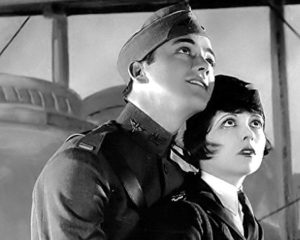 •CHARLES “BUDDY” ROGERS (Olathe)—The actor who soared to great fame when he co-starred with Clara Bow in the hit silent film Wings was also married to Hollywood’s legendary Mary Pickford.
•CHARLES “BUDDY” ROGERS (Olathe)—The actor who soared to great fame when he co-starred with Clara Bow in the hit silent film Wings was also married to Hollywood’s legendary Mary Pickford.
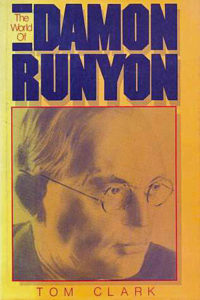 •DAMON RUNYAN (Manhattan)—Runyan from Kansas? It is hard to believe, but it is true. Funny though that Runyan made his reputation as a humorous writer of New York City’s denizens. His characters’ “Runyanesque” slang sure doesn’t have that Kansas twang.
•DAMON RUNYAN (Manhattan)—Runyan from Kansas? It is hard to believe, but it is true. Funny though that Runyan made his reputation as a humorous writer of New York City’s denizens. His characters’ “Runyanesque” slang sure doesn’t have that Kansas twang.
•GALE SAYERS (Wichita; KU Football)—Legendary gridiron star whose concern for dying teammate Brian Piccolo was depicted in 1971’s Brian’s Song. Billy Dee Williams played Sayers.
•MARILYN SCHREFFLER (Topeka)—Forever remembered in animation history as the voice of Popeye’s Olive Oyl.
•DEE WALLACE STONE (Kansas City)—Since graduating from Wyandotte High in 1966, the former Deanna Bowers has made a new name as leading actress in a variety of films. But she will always be remembered as Drew Barrymore’s mother in Spielberg mega-hit E.T. For several years, she and her late husband, Chris Stone, starred in the revamped Lassie TV series. 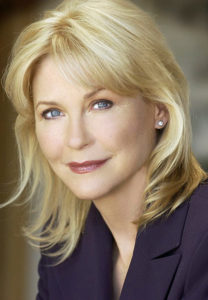
•FRED ANDREW STONE (Topeka)—All that is known is his vaudeville song and dance background.
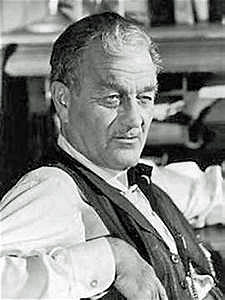 •MILBURN STONE (Burrton)—Forever he is Doc Adams, thanks to his 20-year run on TV’s Gunsmoke. Stone’s career began in early talking pictures where he was often either a villain or action hero.
•MILBURN STONE (Burrton)—Forever he is Doc Adams, thanks to his 20-year run on TV’s Gunsmoke. Stone’s career began in early talking pictures where he was often either a villain or action hero.
•REX STOUT (Topeka)—He is the popular mystery book writer.
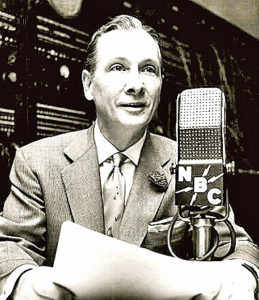 •JOHN CAMERON SWAYZE (Wichita)—Swayze did more than sell Timex watches. He was also one TV and radio’s first news anchors.
•JOHN CAMERON SWAYZE (Wichita)—Swayze did more than sell Timex watches. He was also one TV and radio’s first news anchors.
•MARION TALLEY (Colby)—Yet another opera singer hails and wails from western Kansas.
•VIVIAN VANCE (Cherryvale)—TV’s Ethel Mertz and Viv (characters she portrayed with pal Lucille Ball in
three series) is a Jayhawker by birth.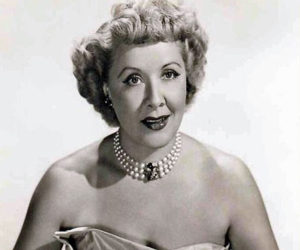
•LYLE WAGGONER (Kansas City)—This KCK native is most remembered for his sketch work and announcing on The Carol Burnett Show.
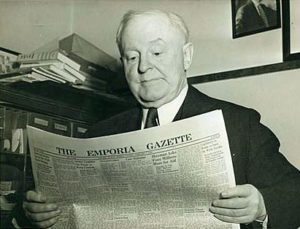 •WILLIAM ALLEN WHITE (Emporia)—The Pulitzer Prize-winning journalist, “The Sage of Emporia,” was the subject of a TV movie, Mary White, based on his famous editorial about the death of his daughter.
•WILLIAM ALLEN WHITE (Emporia)—The Pulitzer Prize-winning journalist, “The Sage of Emporia,” was the subject of a TV movie, Mary White, based on his famous editorial about the death of his daughter.
=====
So there you have it—the most notable Kansans connected even vaguely to showbiz. Or do we have it all? What about Metropolitan Opera singer Carol Wilcox, who was born and raised in KCK? (I went to elementary school with her.)
Kansas continues to have more than just sunflowers and wheat going for it.
=====
